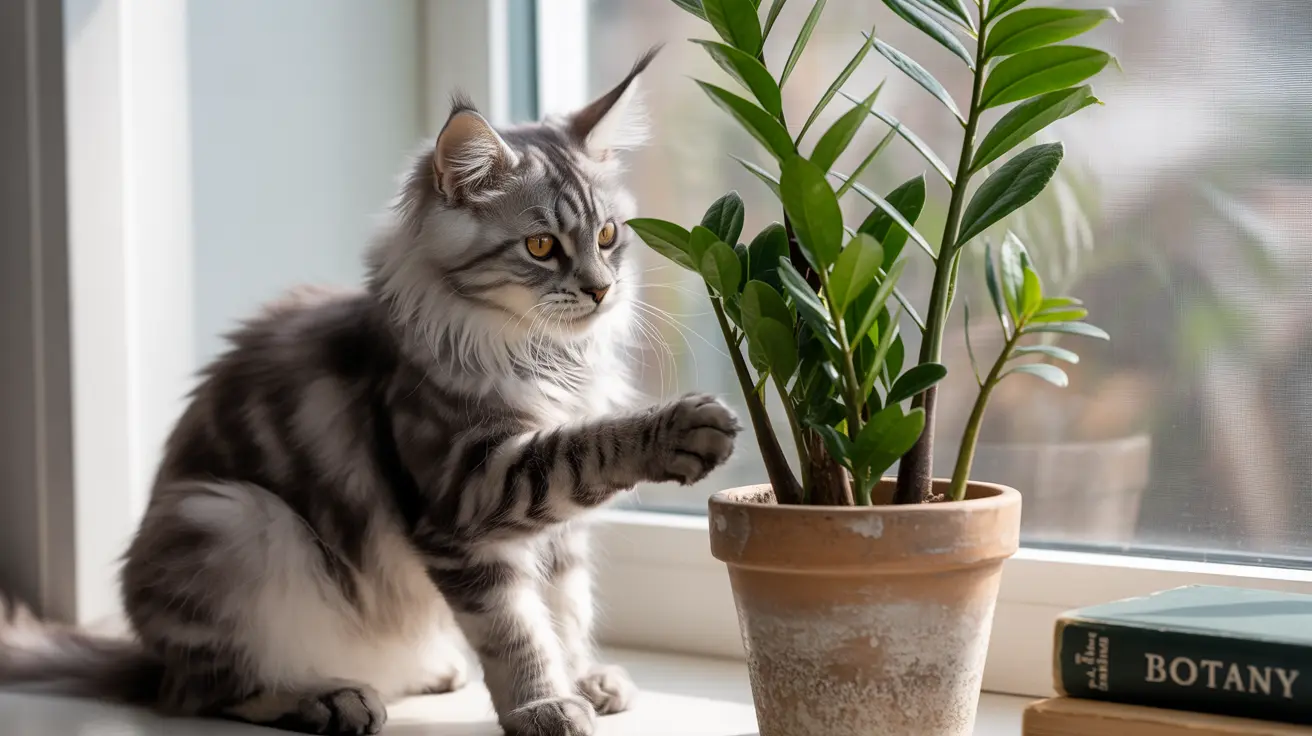Understanding ZZ Plant Toxicity
The ZZ plant contains insoluble calcium oxalate crystals throughout all its parts - from leaves to stems and roots. These microscopic, needle-like crystals are the plant's natural defense mechanism, and they can cause immediate discomfort if your cat bites, chews, or even rubs against the plant.
When a cat comes into contact with these crystals, they can pierce the sensitive tissues in their mouth, throat, and digestive tract, leading to inflammation and irritation.
Signs Your Cat Has Been Exposed
Being able to recognize the symptoms of ZZ plant toxicity can help you act quickly if your cat has encountered the plant. Common signs include:
- Excessive drooling
- Pawing at the mouth
- Vomiting
- Difficulty swallowing
- Oral swelling and redness
- Decreased appetite
- Skin irritation (if contact occurs)
Emergency Response and Treatment
If you suspect your cat has ingested or come into contact with a ZZ plant, take these immediate steps:
- Remove any visible plant material from your cat's mouth
- Rinse their mouth with water if possible
- Contact your veterinarian or pet poison hotline
- Monitor your cat closely for worsening symptoms
Creating a Cat-Safe Plant Environment
To maintain both your love for plants and your cat's safety, consider these preventive measures:
- Place ZZ plants in rooms your cat cannot access
- Use hanging planters well out of jumping range
- Create dedicated plant spaces with physical barriers
- Provide cat-safe alternatives like cat grass or catnip
- Consider replacing ZZ plants with pet-friendly options
Frequently Asked Questions
Are ZZ plants toxic to cats, and what makes them harmful?
Yes, ZZ plants are toxic to cats due to insoluble calcium oxalate crystals present throughout the plant. These crystals can cause immediate irritation and discomfort if ingested or touched.
What symptoms should I watch for if my cat chews on a ZZ plant?
Watch for excessive drooling, pawing at the mouth, vomiting, difficulty swallowing, oral swelling, and decreased appetite. These symptoms typically appear shortly after exposure.
What immediate steps should I take if my cat ingests part of a ZZ plant?
Remove any visible plant material from your cat's mouth, rinse with water if possible, and contact your veterinarian immediately. Monitor your cat closely for worsening symptoms.
How can I keep my cat safe from ZZ plant toxicity at home?
Place ZZ plants in inaccessible areas, use hanging planters, create physical barriers, and consider switching to cat-safe alternatives. Always supervise your cat around houseplants.
What are some safe, non-toxic houseplants I can have around cats instead of ZZ plants?
Safe alternatives include spider plants, Boston ferns, parlor palms, African violets, and Swedish ivy. Always verify plant safety through reliable sources like the ASPCA before bringing them home.
Remember, while ZZ plant toxicity is rarely fatal, it can cause significant discomfort for your cat. The best approach is prevention through careful plant placement and selection. If you choose to keep ZZ plants, ensure they're completely inaccessible to your feline family members.






